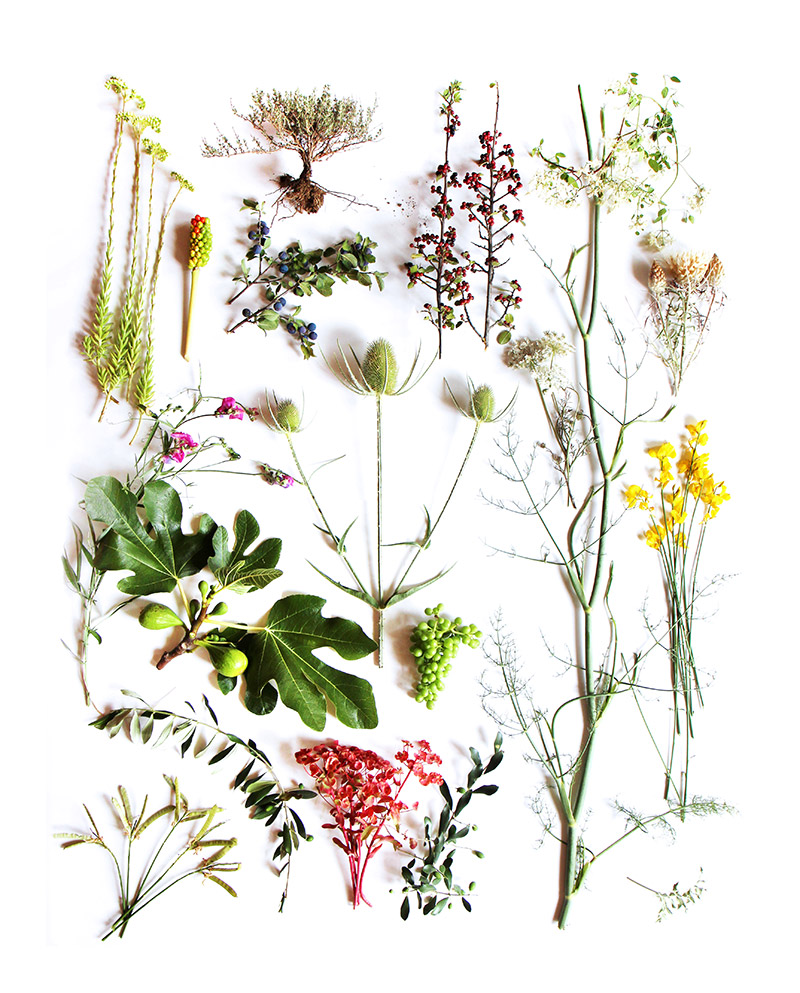
along every roadside, everywhere we go here, two and three foot tall spikes of wild fennel are growing. the flower umbels are just pulling free, and in the next few weeks, they will all sport yellow flowers and lacy fronds that look like dill and smell like anise. we have also recently pulled off to the side of the road, and had the car inundated with the smell of the wild mint we had just driven over. we have passed thickets of wild thyme on a walk through the garrigue. we have seen a rosemary hedge the size of a minivan. and we have driven past stands of parasol pines, whose cones produce pine nuts. these are such exotic foods for a minnesotan, and so preciously expensive back home, that it is almost impossible to imagine a place where they are as wild and abundant as weeds. yet, here we are.
wild fennel
autignac, france

previous to this visit, we have spent two extended stays here in southwest france, but always in the fall. we’re used to seeing black olives, brown figs, yellow lemons, and indigo grapes. right now, they’re all green. already i wish we were staying a little longer.
a collection of july fruits: olives, fig, lemon, grapes
autignac, languedoc, france
-
in their unripened state they are very beautiful though
reply -
Very nice post. I just stumbled upon your blog and wanted to say that I have truly enjoyed browsing your blog posts.
In any case I’ll be subscribing to your feed and I hope you
write again very soon!reply -
I am so happy to have found your calm beautiful blog! Particularly loving these recent images of France as it reminds me of my 5 years in Turkey. Beautiful work! Thank you!
reply

they measure the rainfall here in southwest france in millimeters. when we left minneapolis, we were already over 400 mm, and it was still june. by our standards this is a dry and parched place. and yet, the abundance of fruit and flora makes us re-examine our assumptions. this is not desert. moist air from the mediterranean blows across the plains to the foothills just behind our village. it is dry enough to make the olives and grapes suffer, and yet moist enough to nourish kitchen gardens and orchards. there is so much humidity in fact, that the local charcutier must be located up over the foothills so that his sausages will properly age. so we all drive 20 minutes up over the hill to buy his dried sauasages and salamis. i suppose you could call that an inconvenience. but we don’t.
dried mudcracks
laurens, france
-
i love that climate
reply

after 20 hours of travel, followed by 15 hours of sleep, this is the result of 1 single hour in the garrigue, the local mediterranean scrubland that surrounds us in almost every location where there are no vines. the abundance, for a semi-arid climate, is mind blowing.
early july assemblage from rural languedoc
autignac, france
-
just so fantastic and amazing
reply



that is surely one of the most special attributes of the south of europe, the abundance of wild aromatic herbs. Fennel is lovely to dye with too :)
Hi Margie, we still have trouble getting past the culinary uses of these herbs. But your persistent enthusiasm for the natural dying is infectious :-)